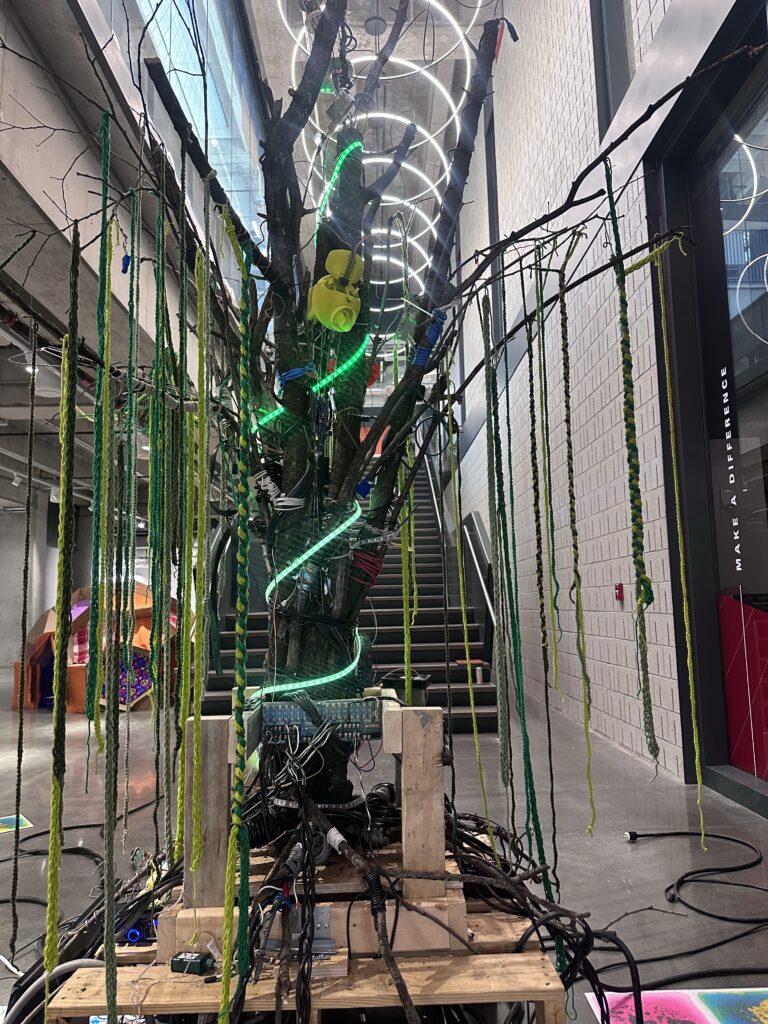a sculptural installation that brings to life the image of a solitary tree mutated with electronic waste, emerging from a landfill. Constructed entirely from discarded electronics—keyboards, wires, broken monitors, motherboards, and phone fragments—alongside other post-consumer trash, the tree will stand as a haunting monument to our age of over consumption and obsolescence.
Leah Johnson, Dan DeGeest, Alyssa Beltman







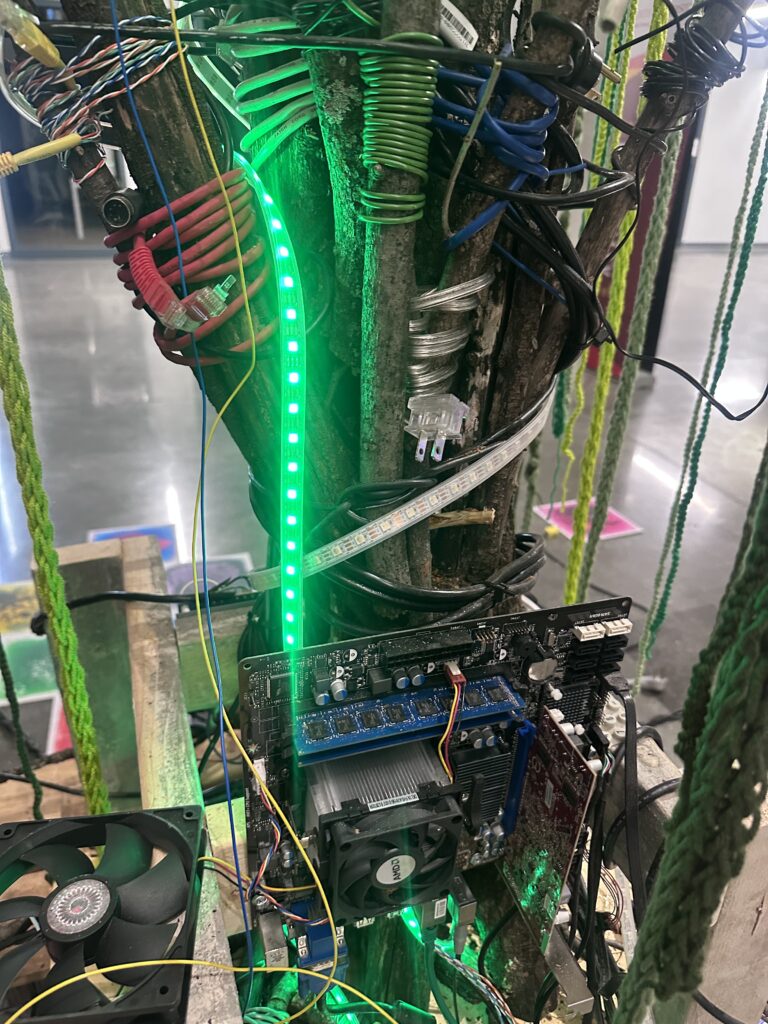

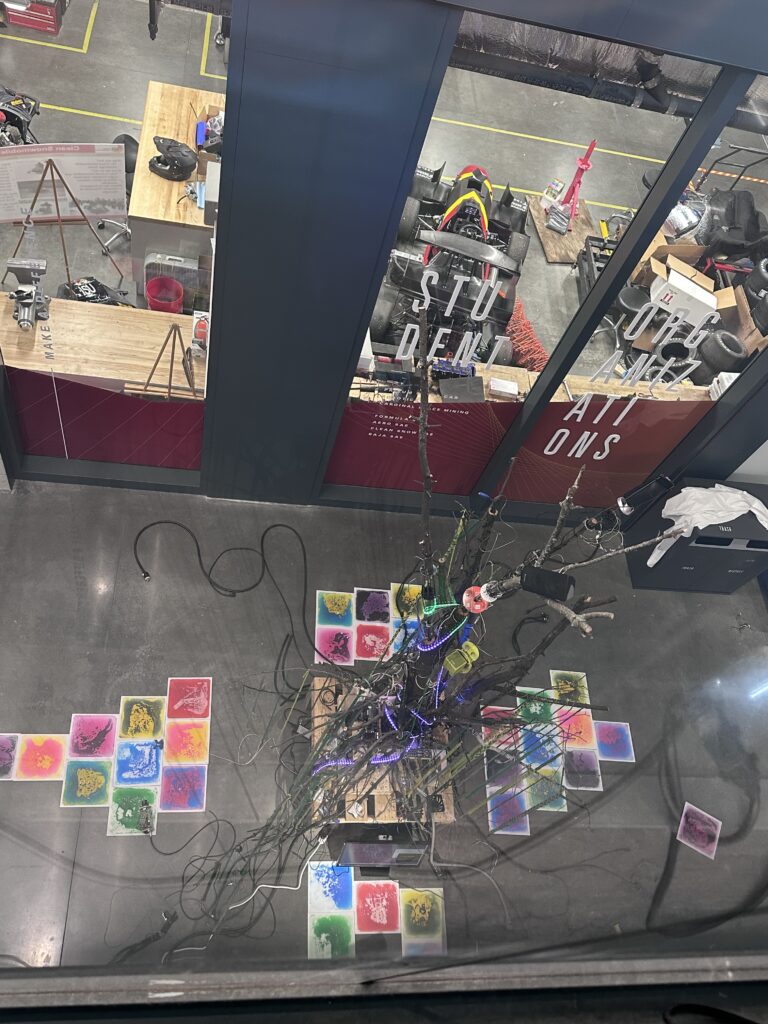
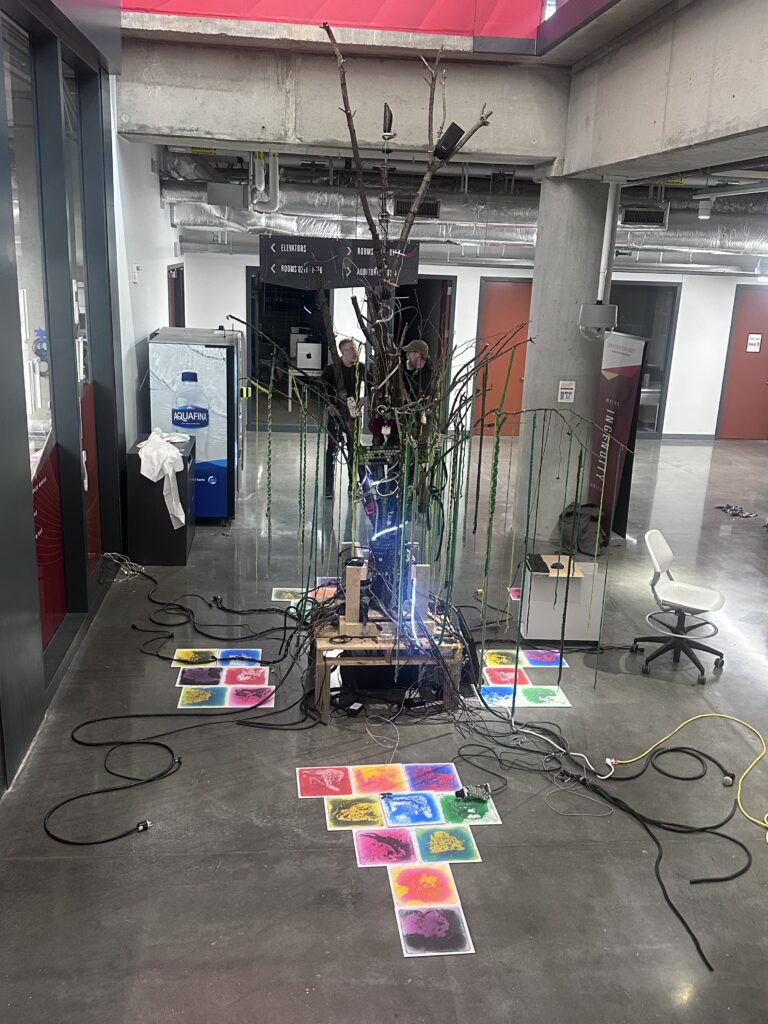

RESEARCH
Mouse Trap/ Rube Goldberg machine
Inspiration for this project came from the classic Mouse Trap game, where we aimed to enhance the user experience by incorporating active participation, sound effects, and movement-triggered actions. We’ve designed a more complex, real-life version of the game, using interactive elements that not only engage players but also activate objects in a dynamic way—like a Rube Goldberg machine. The objective is to create an immersive experience that combines physical interaction with technology to trigger different outcomes.
Assemblage Art – Joesph Cornel
Assemblage is a form of sculpture created by assembling disparate objects, often found items, to create a new whole. His assemblages often evoke a sense of mystery and nostalgia, inviting viewers to interpret the connections between the objects in the boxes. Cornell’s art is characterized by a dreamlike quality, drawing on themes of memory, fantasy, and personal experience. Cornell’s works typically involved arranging objects in shadow boxes filled with carefully placed items like trinkets in order to create a brand new story.
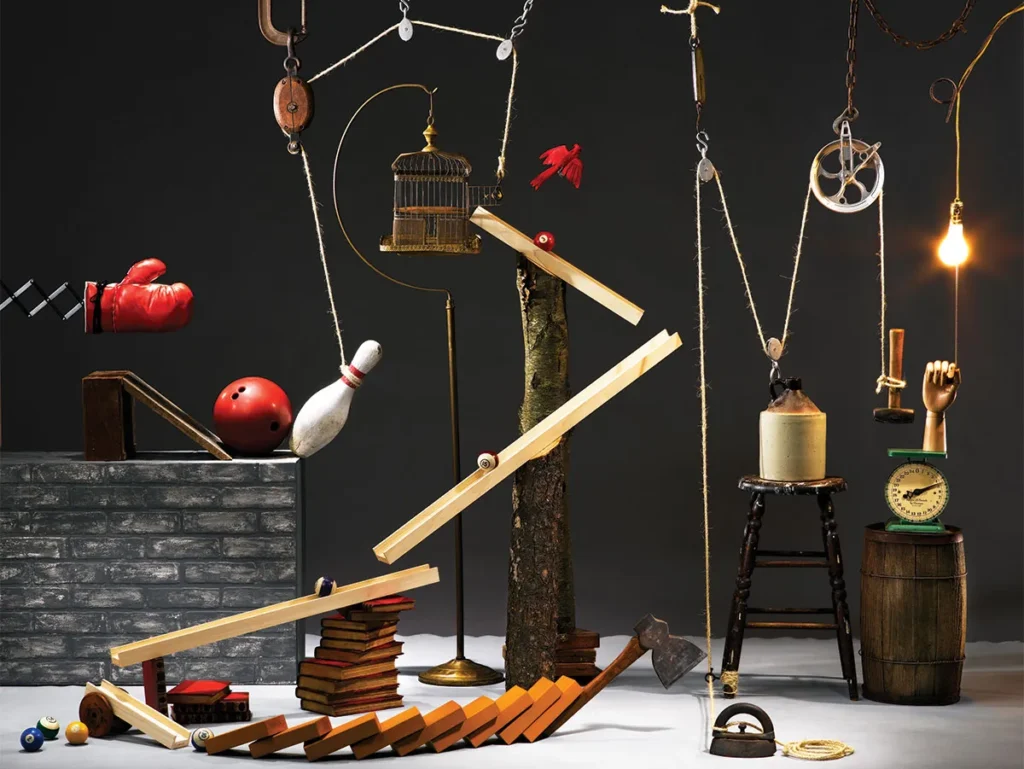
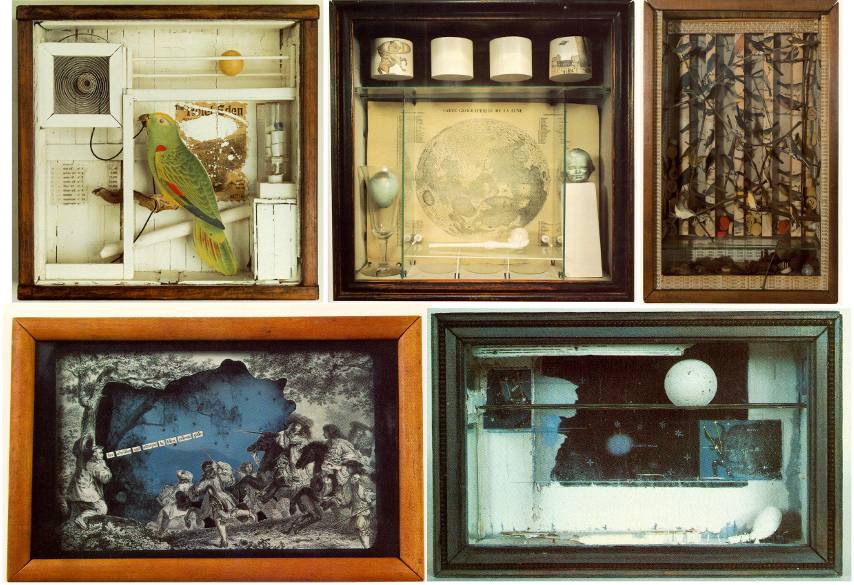
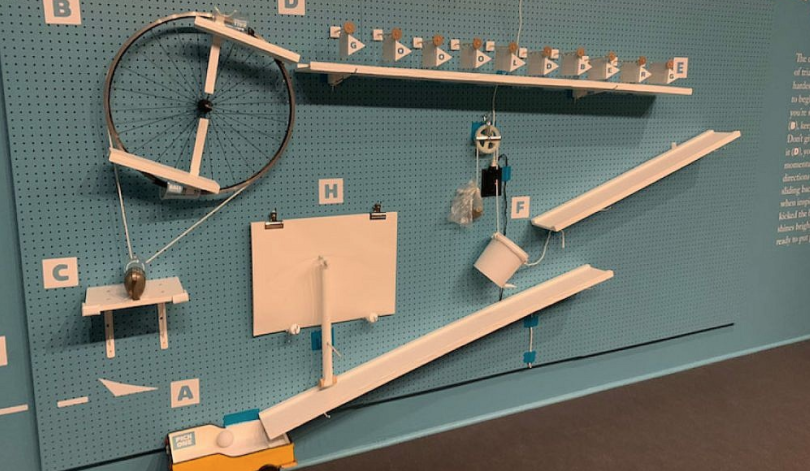
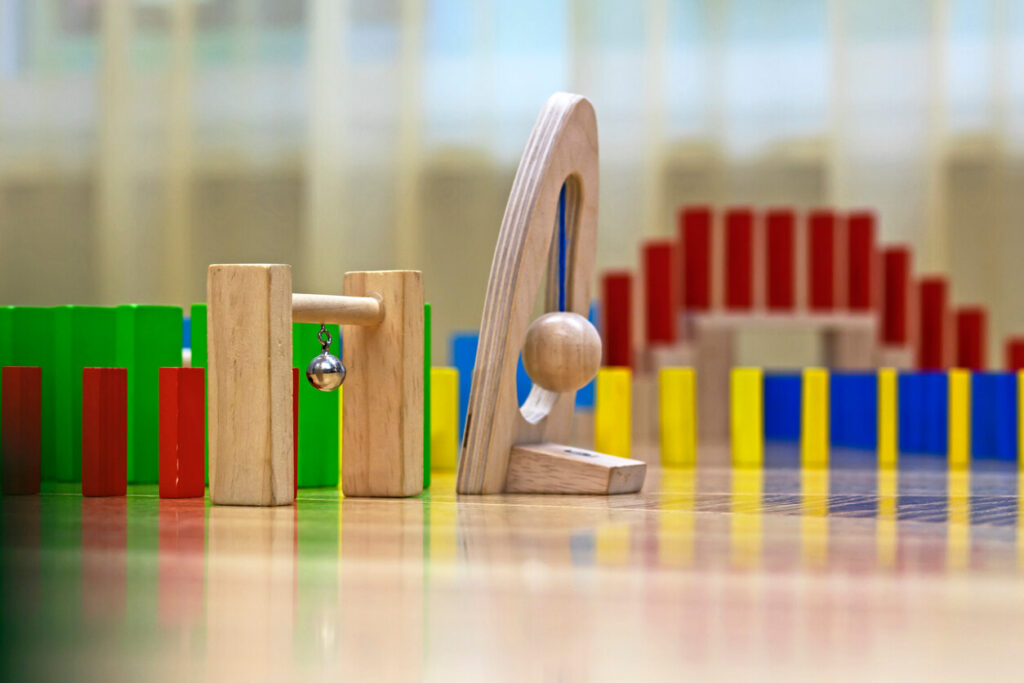
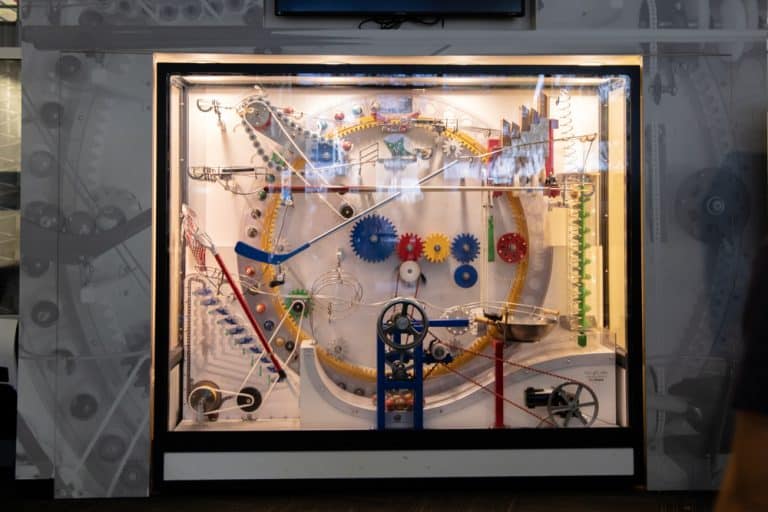
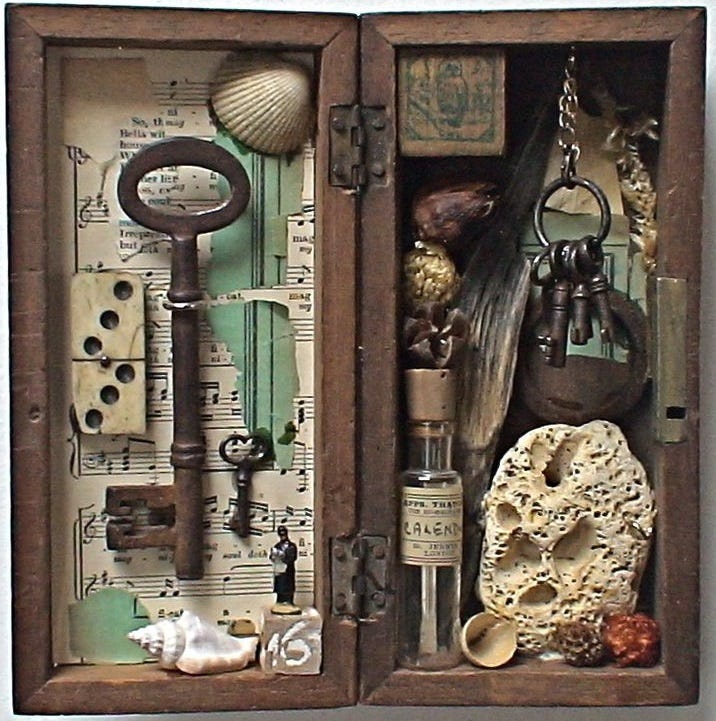
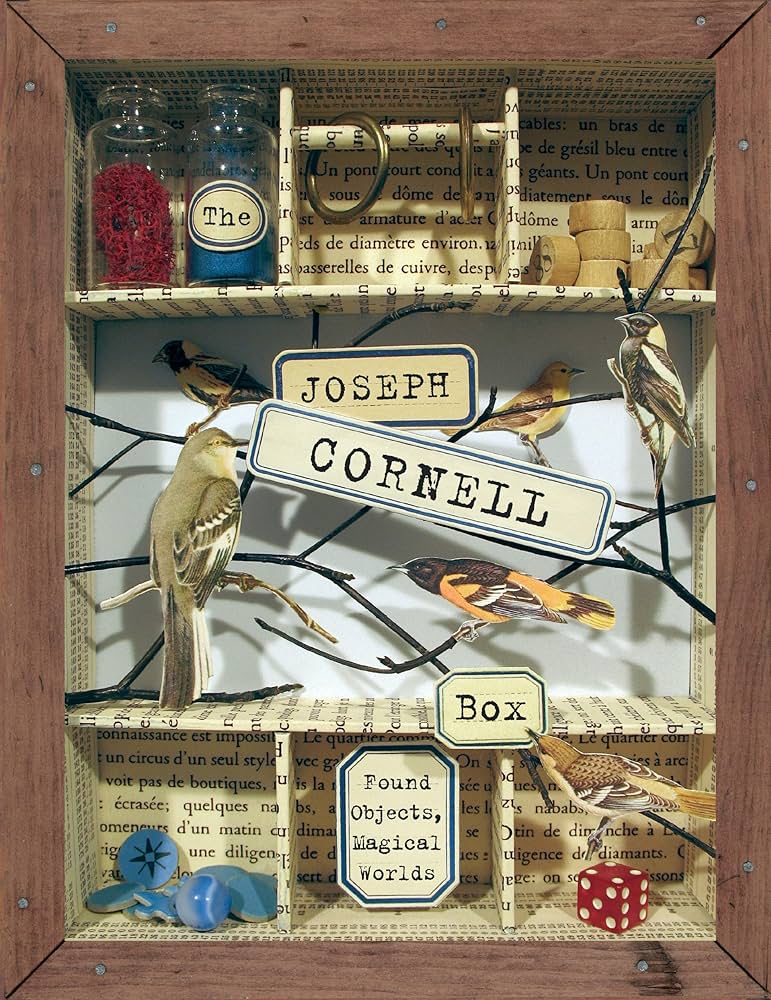
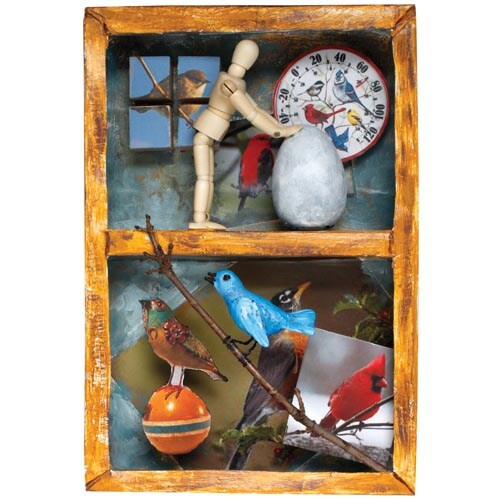
SKETCHING AND IDEATION
Our team explored several ideas, many inspired by Joseph Cornell. As we developed the concept, we realized the installation felt too static and disconnected, making it difficult to execute within our timeline. The interactivity of individual frames seemed isolating and lacked cohesion.
We started with eight components, then narrowed it to three, and finally one. This shift allowed us to move away from rigid, box-like forms toward a more organic, unified structure—eventually leading to the idea of a plant-like design that felt more alive and engaging but also focusing on the amount of electronic waste that occurs within the environment .













PROTOTYPING
together as a group we used found objects and bought only items for coding and interactive elements for the ground. everything else is found objects.
Our Materials
- cables and wires of all types such as coaxial cable, speaker wire, power cords, RoMEX house wire, usb cables
- Circuit boards, keyboards, computers, and other misc. electronics
- reclaimed lumber from Home Construction
- discarded political yard sign holders







BUILDOUT & CONSTRUCTION
Use A real tree found dead in the woods near campus. Mount tree to pallet with necessary bracing to meet the mobile installation requirement. Attach wires to roots to develop the symbiotic/cross-mutated look and feel. Attach more e-waste as needed to continue the sense of a half organic half electronic organism. Add speakers, soundscape and interactivity. To build out the tree we impimented ceramics, coiling, and crochet to continue to build out the form.
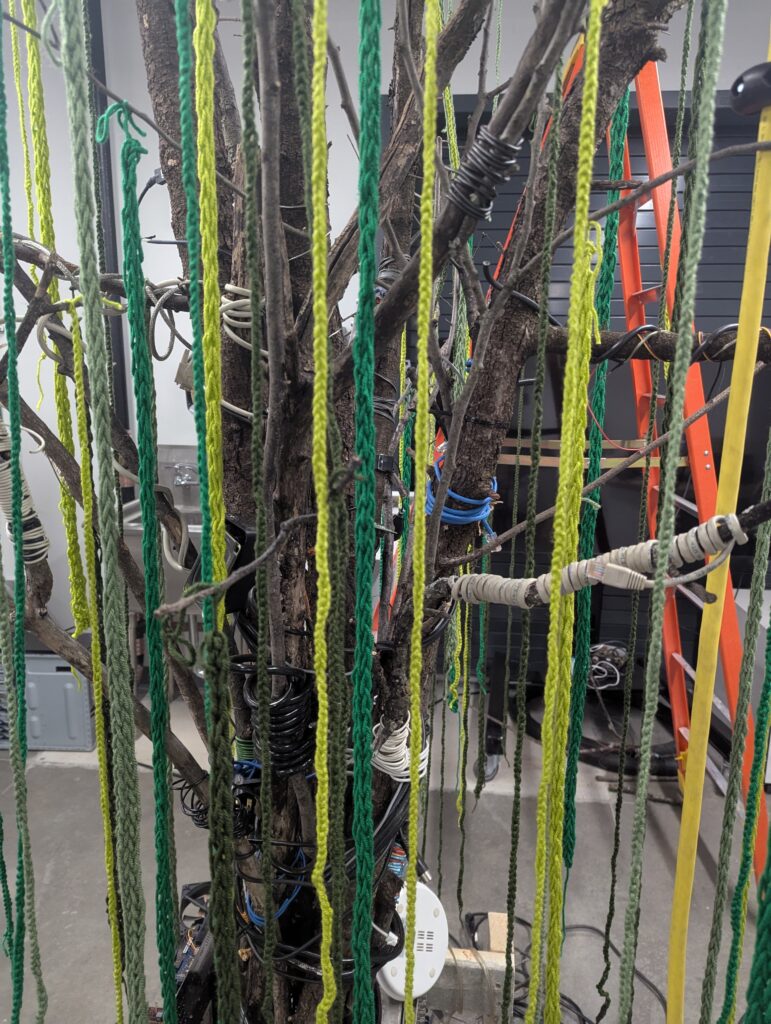


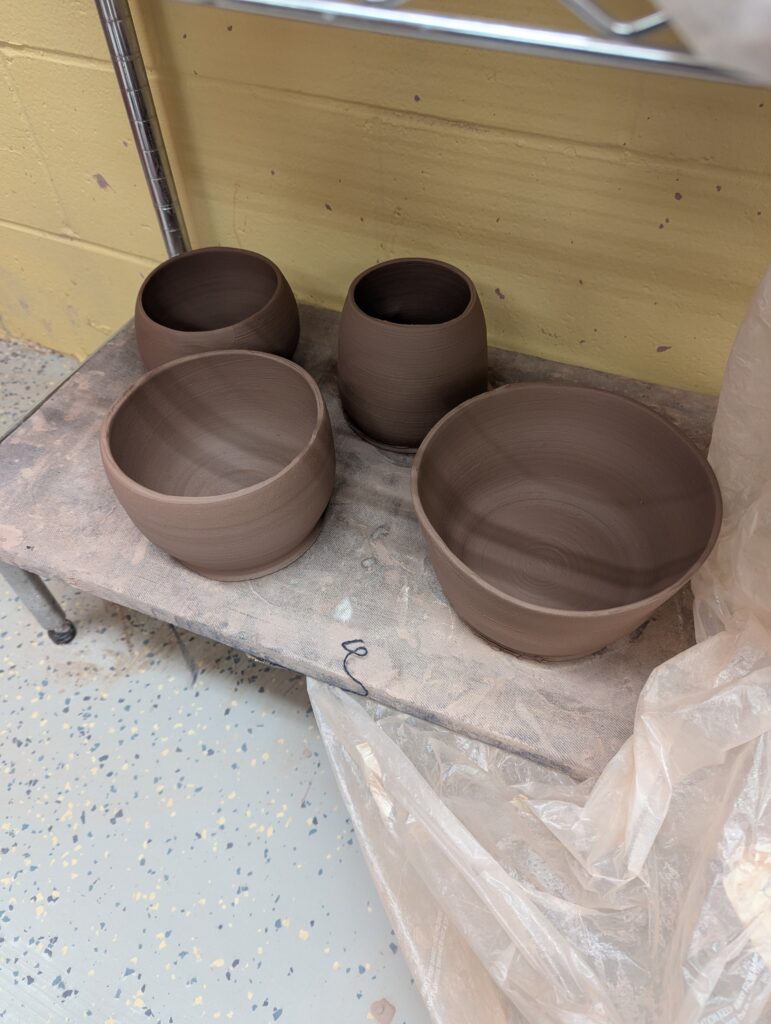

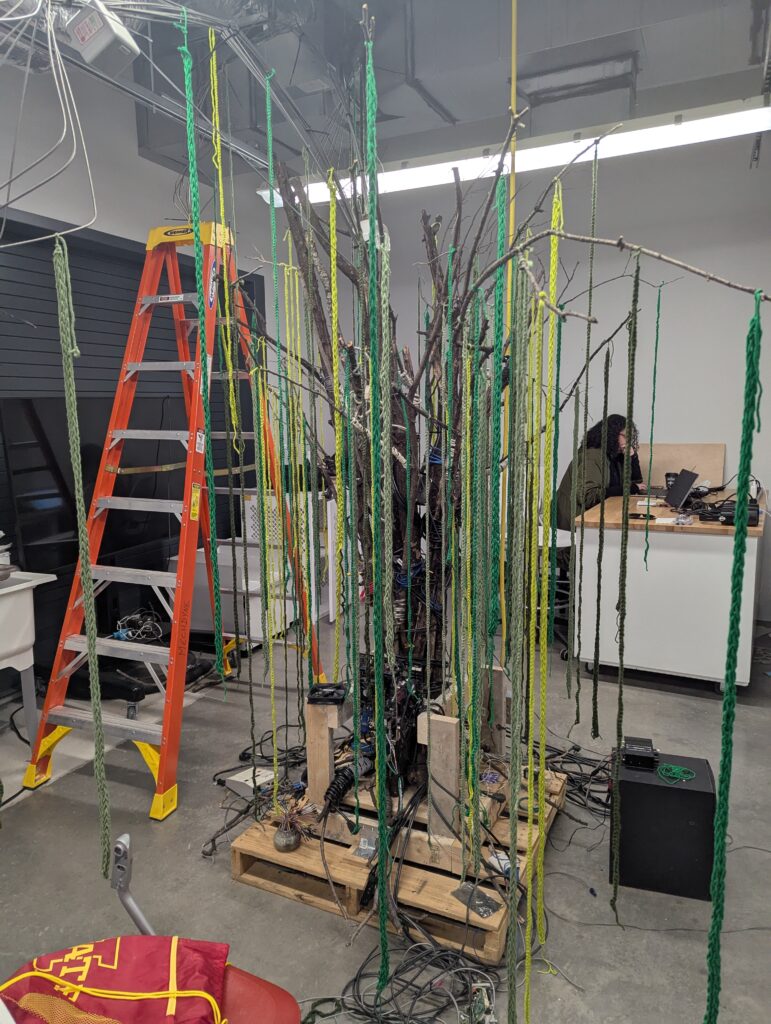
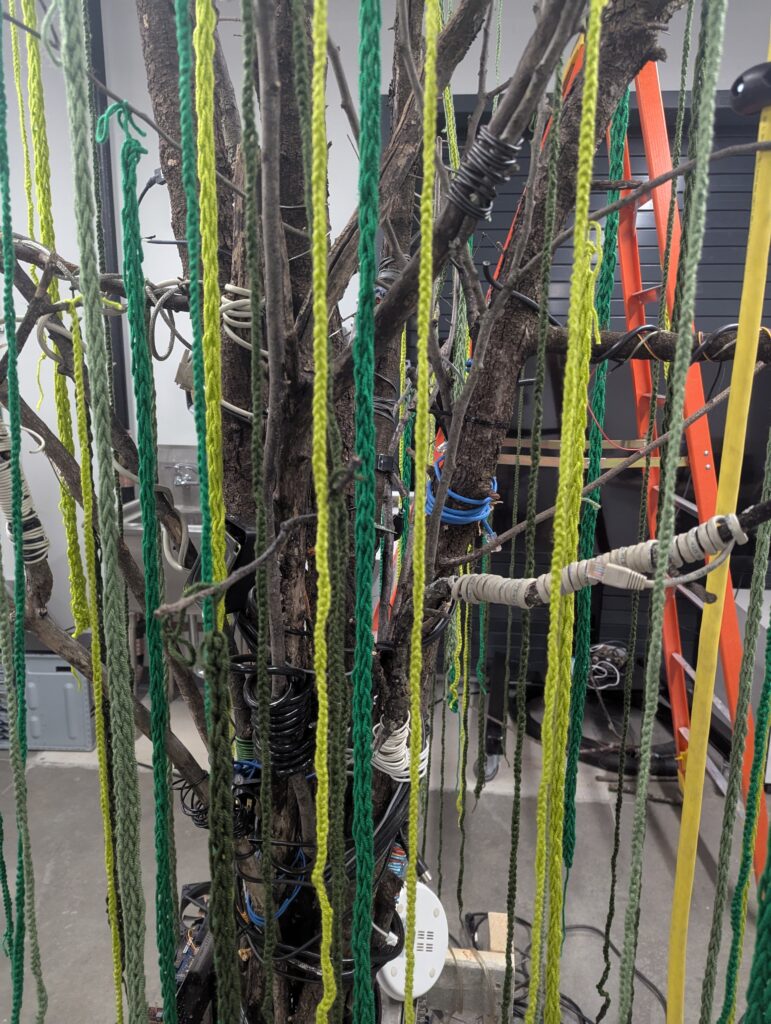
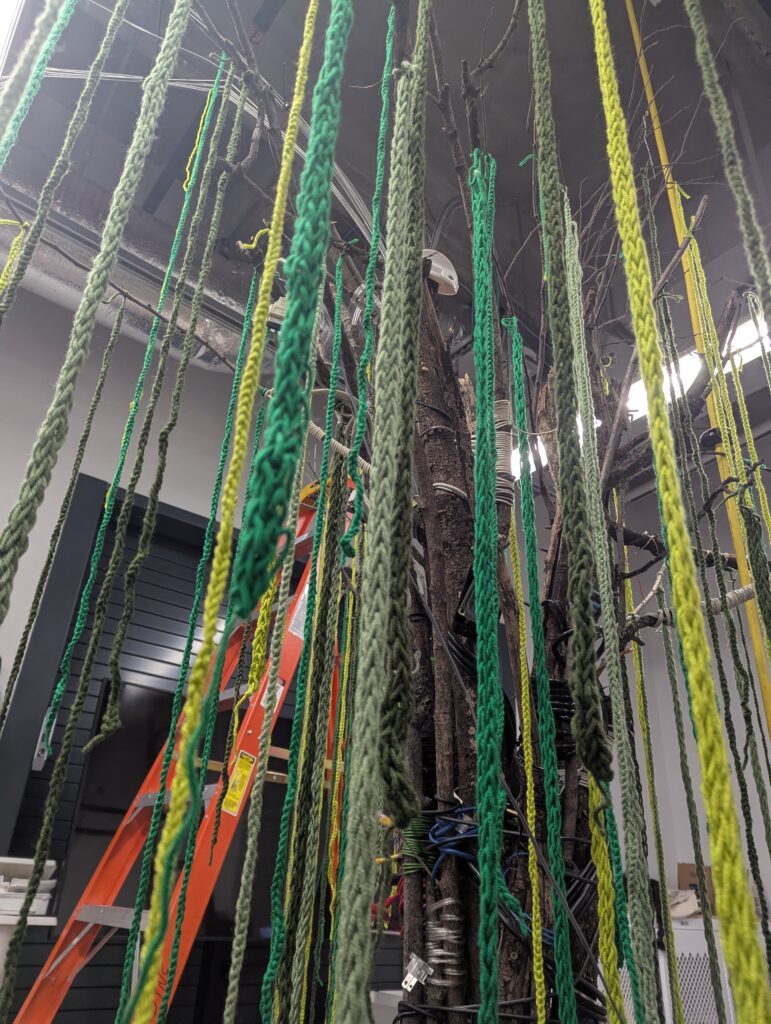

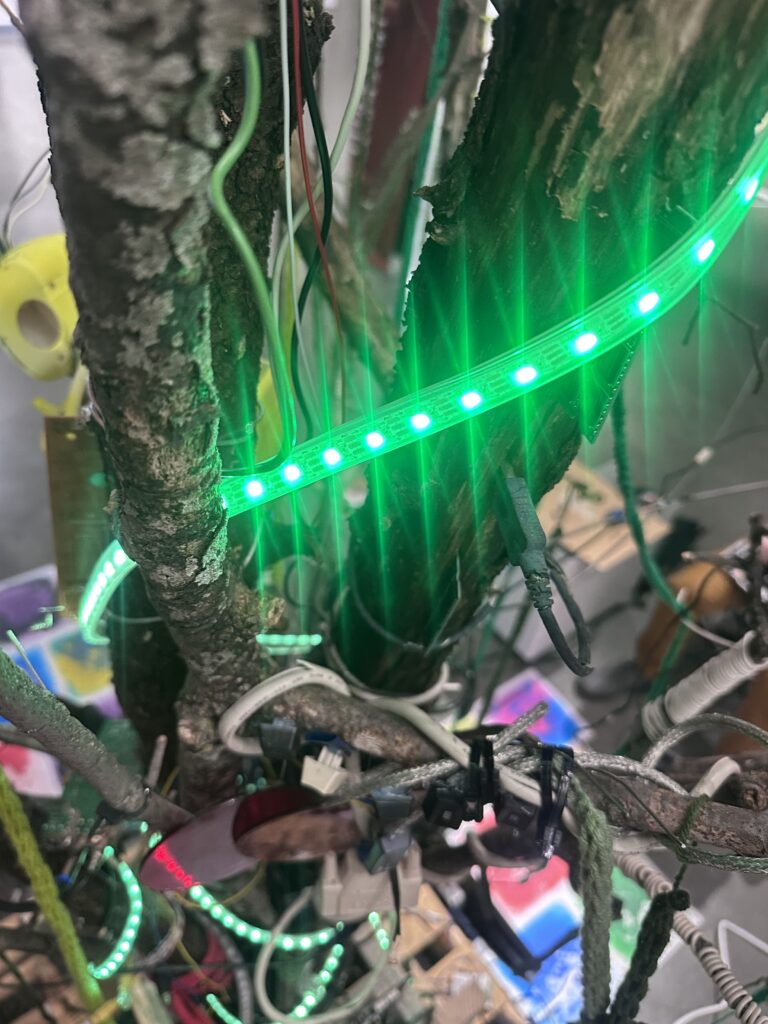
EXHIBITION & CONCLUSION
In the end, our project transformed from a collection of isolated ideas into a unified, organic structure that invites interaction and encourages reflection on a pressing environmental issue: electronic waste. Throughout our process, we prioritized using found and salvaged materials, grounding the project in sustainability from the start. Almost every element in the installation was repurposed—from a real tree we discovered dead near campus, to discarded wires, broken electronics, and other e-waste materials that would have otherwise contributed to the landfill crisis. This intentional use of found objects not only gave our work authenticity but also challenged us to rethink the value of what is often considered trash.
The final form—a plant-like, half-organic, half-electronic hybrid—embodies the tension between the natural and technological worlds. The wires emerging from the roots, the layering of e-waste components, and the embedded speakers and soundscape create an unsettling but immersive experience. It is meant to reflect how deeply entangled we are with technology, and how that relationship impacts our environment. Our installation speaks to this growing crisis and reminds viewers that while this is a global problem, it carries local responsibility. Through our design, materials, and interactivity, we hope to encourage others to consider their role in the life cycle of electronics—and imagine more sustainable futures.
